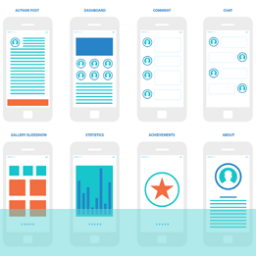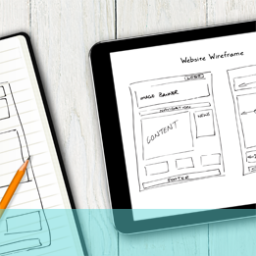
Is AxureRP the best tool for prototyping?
In earlier days of website design both developers and clients had to be content with wireframe prototypes to convey the structure, look and feel of the site. Nothing else was available and the wireframe was a useful (if limited) way of viewing proposals. The main problem with them was that they didn’t really show clients what the web page was going to look like and less technically literate viewers could find it hard to understand and visualise the concepts. They were also often heavily annotated to assist explanation which again could be cumbersome and daunting for the uninitiated. So wireframes are limited, difficult to follow, can be prescriptive and encourage a lack of dialogue and communication; they can also be very time-consuming and over-elaborate.
While there was no practical alternative they served a useful purpose; but now there is something called rapid prototyping which would appear to consign the wireframe to oblivion.
Rapid prototyping is a means of presenting an easily-understandable and visually more comparable version of a prototype to clients and other users in the design process. It avoids a lot of the unnecessary documentation and annotation that often come with wireframes and is easier, quicker -and better – for planners, designers and clients alike. So, if rapid prototyping is the future what is the best of the available proprietary tools?
Many of those involved in Rapid Prototyping (RP) do use AxureRP but a lot of experts and practitioners have some fairly serious reservations about it.
First the positives, which are many and have convinced a lot of the industry that it is worth adopting despite the drawbacks.
- versatility, power and speed which make it suitable for a wide range of uses
- great version control and revisioning software which makes it ideal for sharing with team members and clients wherever they are based
- automatic documentation generation
- exports to HTML and runs in any browser making user testing quick and simple
- prototypes can be shown on any device without further adaptation.
These are the advantages and benefits – but what about the downside? There is quite a strong body of professional opinion that believes Axure to be seriously flawed and contributing to some pretty poor practices and outcomes. They cite:
- restrictive and poor layout options,
- trying to be all things in the design process and falling short in most aspects
- being complex and difficult to learn to use well
- dictating too many aspects due to its inflexibility
- not allowing for displaying interaction of elements.
The real tensions are between the fact that something like Axure RP encourages prototyping and facilitates many aspects of it, especially client and team involvement, against the quality of outputs and confining nature of the tool. Many of those currently using it see the benefit of enabling this approach and are prepared to live with the constraints. Perhaps the more purist, design or function led developers feel that a range of options are needed to get optimum outcomes. Your preference might well emerge from your style of working and the complexity and nature of your projects.
We have direct experience of AxureRP and many other website design tools. If you would like more information or advice on this or any website usability issues, why not tap into our extensive knowledge by giving us a call free on 08000 246 247 or dropping us an email at hello@ux247.com.

















